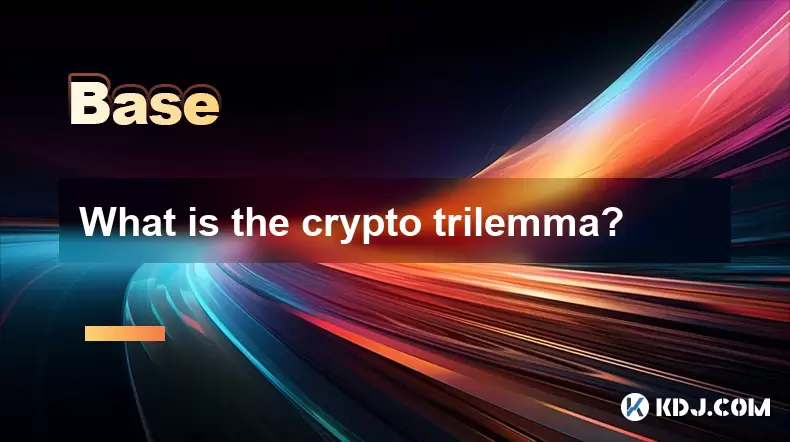-
 Bitcoin
Bitcoin $117400
-0.46% -
 Ethereum
Ethereum $3768
0.60% -
 XRP
XRP $3.551
2.09% -
 Tether USDt
Tether USDt $1.000
0.00% -
 Solana
Solana $203.2
11.30% -
 BNB
BNB $770.9
1.92% -
 USDC
USDC $0.9999
0.01% -
 Dogecoin
Dogecoin $0.2709
-0.02% -
 Cardano
Cardano $0.9024
4.49% -
 TRON
TRON $0.3139
0.60% -
 Hyperliquid
Hyperliquid $45.60
-1.41% -
 Stellar
Stellar $0.4730
-1.34% -
 Sui
Sui $4.025
2.15% -
 Chainlink
Chainlink $19.79
2.19% -
 Hedera
Hedera $0.2724
-2.39% -
 Avalanche
Avalanche $25.93
3.05% -
 Bitcoin Cash
Bitcoin Cash $524.0
-1.83% -
 Shiba Inu
Shiba Inu $0.00001558
0.50% -
 Litecoin
Litecoin $116.7
-0.30% -
 UNUS SED LEO
UNUS SED LEO $8.996
0.00% -
 Toncoin
Toncoin $3.334
1.83% -
 Polkadot
Polkadot $4.506
0.34% -
 Uniswap
Uniswap $10.99
4.83% -
 Ethena USDe
Ethena USDe $1.001
0.03% -
 Pepe
Pepe $0.00001461
3.17% -
 Monero
Monero $320.3
-1.01% -
 Bitget Token
Bitget Token $4.935
0.36% -
 Dai
Dai $0.9998
0.00% -
 Aave
Aave $322.4
-1.25% -
 Bittensor
Bittensor $455.6
9.33%
What is the crypto trilemma?
The crypto trilemma challenges blockchains to balance decentralization, security, and scalability, often requiring trade-offs among the three.
Jul 20, 2025 at 04:21 pm

Understanding the Concept of the Crypto Trilemma
The crypto trilemma is a foundational concept in blockchain technology that highlights the challenge of achieving three critical properties—decentralization, scalability, and security—simultaneously in a blockchain network. While each of these components is vital, improving one often comes at the expense of the others, creating a balancing act for developers and protocol designers. Decentralization ensures that no single entity controls the network, scalability refers to the system's ability to handle a growing number of transactions efficiently, and security involves protecting the network from attacks and fraud.
Why Decentralization Is a Core Pillar
Decentralization is one of the core principles of blockchain technology. It eliminates the need for a central authority by distributing control across a network of nodes. This distribution ensures that no single point of failure exists, enhancing the system's resilience. However, maintaining a high degree of decentralization often leads to slower transaction speeds and increased complexity in achieving consensus among nodes. As a result, blockchain networks that prioritize decentralization may struggle with scalability, especially when the number of users and transactions increases significantly.
How Scalability Affects Network Performance
Scalability refers to a blockchain’s ability to handle a large volume of transactions quickly and efficiently. Many early blockchain networks, including Bitcoin and Ethereum, face scalability challenges due to their consensus mechanisms and block size limitations. For example, Bitcoin can process only about 7 transactions per second, while traditional payment systems like Visa handle thousands. Improving scalability often involves trade-offs, such as increasing block size, reducing the number of validating nodes, or implementing off-chain solutions like the Lightning Network. Each of these approaches impacts decentralization or security in some way.
The Role of Security in Blockchain Networks
Security is essential for maintaining the integrity and trustworthiness of a blockchain. It involves cryptographic techniques, consensus algorithms, and network protocols that protect against malicious attacks such as 51% attacks, Sybil attacks, and double-spending. Strong security measures often require more computational power and time to validate transactions, which can slow down the network and reduce scalability. For instance, Proof of Work (PoW) blockchains like Bitcoin are highly secure but consume significant energy and offer limited throughput. In contrast, Proof of Stake (PoS) systems may offer better scalability but potentially compromise on decentralization if wealth concentration among validators becomes an issue.
Examples of the Trilemma in Real-World Blockchains
Several blockchain projects attempt to address the crypto trilemma by emphasizing two of the three components while making concessions on the third. Bitcoin prioritizes security and decentralization, resulting in limited scalability. Ethereum, particularly before its transition to Ethereum 2.0, focused on decentralization and security, which led to high gas fees and slow transaction times during peak usage. Newer blockchains like Solana and Avalanche emphasize scalability and security, but critics argue that they sacrifice some degree of decentralization due to the complexity and resource requirements of running full nodes. Layer-2 solutions and sharding techniques are being explored to mitigate these trade-offs without compromising the core principles.
Approaches to Solving the Crypto Trilemma
Various technological innovations aim to address the crypto trilemma. Sharding divides the blockchain into smaller, manageable segments, allowing parallel transaction processing and improving scalability without sacrificing decentralization. Layer-2 protocols such as the Lightning Network and Optimistic Rollups operate on top of existing blockchains to handle transactions off-chain, reducing the burden on the main network. Hybrid consensus mechanisms combine elements of PoW and PoS to balance security and efficiency. Additionally, zero-knowledge proofs and other cryptographic advancements are being integrated to enhance scalability and privacy while maintaining high security standards.
Frequently Asked Questions (FAQs)
Q: Can a blockchain achieve all three aspects of the trilemma equally?
A: In theory, achieving all three simultaneously is extremely challenging due to inherent trade-offs. Most blockchains optimize for two while managing the third through secondary solutions or compromises.
Q: How do Layer-2 solutions help with the crypto trilemma?
A: Layer-2 solutions offload transaction processing from the main chain, improving scalability without compromising the underlying blockchain’s decentralization and security.
Q: Does Ethereum 2.0 solve the crypto trilemma?
A: Ethereum 2.0 introduces Proof of Stake and sharding, aiming to enhance scalability and energy efficiency while maintaining decentralization and security. However, it still faces challenges and trade-offs in fully resolving the trilemma.
Q: What role does consensus play in the crypto trilemma?
A: Consensus mechanisms like Proof of Work and Proof of Stake directly impact security and scalability. Choosing the right consensus model is crucial for balancing the three pillars effectively.
Disclaimer:info@kdj.com
The information provided is not trading advice. kdj.com does not assume any responsibility for any investments made based on the information provided in this article. Cryptocurrencies are highly volatile and it is highly recommended that you invest with caution after thorough research!
If you believe that the content used on this website infringes your copyright, please contact us immediately (info@kdj.com) and we will delete it promptly.
- XRP, Bitcoin, Ripplecoin: Navigating the Crypto Landscape in 2025
- 2025-07-22 20:30:13
- Cardano Ecosystem Watch: Can PayFi Token Remittix Trigger an ADA Overtake?
- 2025-07-22 20:50:13
- JasmyCoin Price Forecast: Chart Analysis Points to Potential Surge
- 2025-07-22 20:55:13
- Remittix, XRP, and Dogecoin: What's Hot in the Crypto Game Right Now?
- 2025-07-22 20:10:14
- BlockchainFX, PEPE, and USDT: What's the Buzz in the Crypto Jungle?
- 2025-07-22 18:50:12
- Ripple's RLUSD: Institutional Backing Fuels Stablecoin Ascent
- 2025-07-22 18:30:12
Related knowledge

What is the difference between CeFi and DeFi?
Jul 22,2025 at 12:28am
Understanding CeFi and DeFiIn the world of cryptocurrency, CeFi (Centralized Finance) and DeFi (Decentralized Finance) represent two distinct financia...

What is the difference between a sidechain and a Layer 2?
Jul 20,2025 at 11:35pm
Understanding the Concept of SidechainsA sidechain is a separate blockchain that runs parallel to the main blockchain, typically the mainnet of a cryp...

What is the Inter-Blockchain Communication Protocol (IBC)?
Jul 19,2025 at 10:43am
Understanding the Inter-Blockchain Communication Protocol (IBC)The Inter-Blockchain Communication Protocol (IBC) is a cross-chain communication protoc...

How does sharding improve scalability?
Jul 20,2025 at 01:21am
Understanding Sharding in BlockchainSharding is a database partitioning technique that is increasingly being adopted in blockchain technology to enhan...

What is the "crypto trilemma" of scalability, security, and decentralization?
Jul 19,2025 at 06:28pm
Understanding the Concept of the Crypto TrilemmaThe crypto trilemma refers to the challenge of simultaneously achieving scalability, security, and dec...

What is a cliff and vesting schedule in tokenomics?
Jul 20,2025 at 10:28am
What Does a Cliff Mean in Tokenomics?In tokenomics, a cliff refers to a specific period during which token holders are not allowed to access or transf...

What is the difference between CeFi and DeFi?
Jul 22,2025 at 12:28am
Understanding CeFi and DeFiIn the world of cryptocurrency, CeFi (Centralized Finance) and DeFi (Decentralized Finance) represent two distinct financia...

What is the difference between a sidechain and a Layer 2?
Jul 20,2025 at 11:35pm
Understanding the Concept of SidechainsA sidechain is a separate blockchain that runs parallel to the main blockchain, typically the mainnet of a cryp...

What is the Inter-Blockchain Communication Protocol (IBC)?
Jul 19,2025 at 10:43am
Understanding the Inter-Blockchain Communication Protocol (IBC)The Inter-Blockchain Communication Protocol (IBC) is a cross-chain communication protoc...

How does sharding improve scalability?
Jul 20,2025 at 01:21am
Understanding Sharding in BlockchainSharding is a database partitioning technique that is increasingly being adopted in blockchain technology to enhan...

What is the "crypto trilemma" of scalability, security, and decentralization?
Jul 19,2025 at 06:28pm
Understanding the Concept of the Crypto TrilemmaThe crypto trilemma refers to the challenge of simultaneously achieving scalability, security, and dec...

What is a cliff and vesting schedule in tokenomics?
Jul 20,2025 at 10:28am
What Does a Cliff Mean in Tokenomics?In tokenomics, a cliff refers to a specific period during which token holders are not allowed to access or transf...
See all articles

























































































